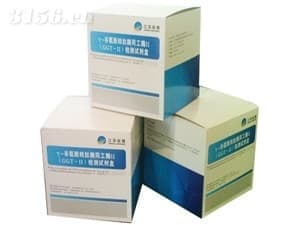Product List

Product Center

γ-Glutamyl Transpeptidase Isoenzyme II (GGT- II) Test Kit
The isoenzymes of γ-glutamyl transpeptidase have different molecular weights and isoelectric points. They are separated by different colloidal mobility in polyacrylamide gel in the same electric field and colored by enzyme-catalyzed reactions. The cancer liver-specified GGT zone is finally tested. GGT-II is mainly synthesized by hepatic cancer cells and secreted to blood and therefore is highly specified for the diagnosis of liver cancer. The positive rate of GGT-II is up to 90%. The false-positive rate of GGT-II is only 3.1% in benign liver diseases. GGT-II is negative in gravida, extrahepatic tumors and normal controls. The positive rate of GGT-II is up to 80% in small liver carcinoma of which the diameter is less than 3 cm. During the follow-up visits to the patients with cirrhosis, it was found that GGT-II may appear before the imaging diagnosis indicates the liver cancer. The positive rate of GGT-II is also up to 78.67% in AFR negative hepatic cancer patients. After a series of clinical screening research carried out by domestic and foreign scholars, the comprehensive evaluation of GGT-II for hepatic diagnosis is that, sensitivity 94%, specificity 97.1%. So, GGT-II is a key index for the early diagnosis and differential diagnosis of hepatic cancer and is beneficial to estimate the curative effect and prognosis of hepatic cancer. It can also be used for the differential diagnosis of chronic liver diseases, high risk population and health examination people.